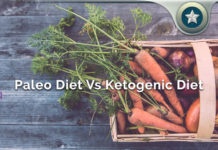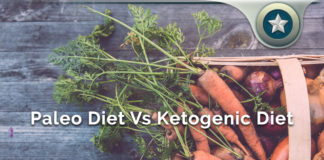Strong bones are the foundation for a healthy body. We know the importance of calcium and the effects that it has on our skeletal structure, but we often forget about Vitamin D. Vitamin D is absolutely crucial when it comes to proper absorption of calcium. It helps promote correct bone growth and strength.
Those who are deficient in Vitamin D have a high chance of developing weak bones in children, also known as rickets, and brittle and misshapen bones in adults, known as osteomalacia. But these aren’t the only functions that Vitamin D is used for in our body.
Vitamin D: The Sunshine Supplement
There have been many studies conducted in an attempt to determine the effects of low levels of Vitamin D. The conclusions linked Vitamin D deficiency to diseases like cancer, heart disease, obesity, and even depression. This same research speculates that people who have high levels of Vitamin D in their bodies also are at a decreased risk for a variety of diseases. Although, the lack of Vitamin D doesn’t necessarily mean that you are more likely to develop a disease. The only 100% proven benefit of increased levels of Vitamin D is the ability to absorb calcium better.
However, we know for a fact that Vitamin D is responsible for the proper regulation of our immune system and neuromuscular system. Furthermore, the life cycle of our cells is highly influenced by Vitamin D. Because of this, your body is able to produce Vitamin D for self-sufficiency but only after exposure to the sun. The problem is that many people in the north, as well as people who have darker skin, do not get enough sunlight to promote sufficient production of Vitamin D.
This can cause many underlying issues to occur in your body. The problem is that since there hasn’t been enough research done to determine direct relationships between Vitamin D deficiency and the occurrence of numerous diseases, we aren’t sure exactly how Vitamin D influences our bodies. One thing is certain; too much Vitamin D isn’t a bad thing.
Obviously, getting the right amount of sunshine is the absolutely best way to increase your Vitamin D levels. But what about all the people who live north of the Los Angeles to Columbia, S.C. line? It is estimated that they do not get enough sunshine to have the right levels of Vitamin D.
Don’t freak out; there is another way to get your Vitamin D intake… it’s called food.
That’s right; there are plenty of foods out there that have a high level of Vitamin D in them, which can help you get the right amount needed for your body.
The best part is that these foods are easily accessible and don’t require you to spend a lot of money to get them. Take a look and see which of these Vitamin D rich foods you can incorporate into your diet.
Cod Liver Oil
We will be honest, this isn’t exactly a food. Cod liver oil is more often consumed as a supplement in the form of a pill, but it boasts a huge amount of benefits and Vitamin D is just one of them. Vitamin A, as well as anti-inflammatory omega-3 fatty acids, are also two addition highly positive benefits you can gain when using cod liver oil to increase your Vitamin D levels.
The omega-3 fatty acids in combination with Vitamin D can decrease inflammation, reduce depression, promote cardiovascular health, and even preserve brain health. Lowering high blood pressure and preventing and treating diabetes is also possible with the consumption of cod liver oil.
Cod liver oil comes from, if you haven’t figured it out yet, cod livers! You can get extra oil either from consuming cod liver directly or by choosing to use a supplement containing cod liver oil, which is the more likely scenario. The supplement can be easily purchased either in your local pharmacy or through many only retailers.
Salmon, Mackerel, and Tuna
Most oily fish such as salmon, mackerel, and tuna have high amounts of Vitamin D in them. Oddly enough, farmed salmon usually has about 25% higher Vitamin D content than wild salmon. There are different ways to prepare these fish and each will result in different amounts of Vitamin D delivery into your body. The best way to retain as much Vitamin D in fish as possible is through baking it.
On average, three ounces of salmon contains about 400 IU, which is two-thirds of the amount needed for the recommended daily dose of Vitamin D. Mackerel has the same amount of Vitamin D in it as salmon does. Tuna is the least beneficial for Vitamin D delivery and only contains about 228 IU per three ounces.
Furthermore, these oily fish also contain the omega-3 fatty acids which we mentioned earlier. This makes these fish one of the best choices for not only increasing your Vitamin D levels but also improving your overall health.
Raw Milk
There is a very good reason why milk has been thought as extremely nutritional and beneficial to our health. Not only does one cup of milk offer around 100 IU of Vitamin D, which is a sixth of the daily recommended dose, but it also provides you with 276 mg of calcium, which is a little over a quarter of the recommended dose for men between ages of 25 and 65. But Vitamin D and calcium aren’t the only nutrients found in milk.
Potassium is also present in large quantities in milk. The suggested daily potassium intake is around 4,700 milligrams each day and only 2% of the US population actually intakes enough potassium to maintain sufficient cardiovascular health. One cup of milk offers 322 milligrams of potassium. Drinking milk can definitely improve your overall bone health and heart health.
Vitamin D Rich Foods Conclusion
There are a few other foods out there such as mushrooms and caviar that can help increase your Vitamin D levels, but we found that they offer a very small amount of UI to be considered a good choice to increase your Vitamin D intake. We should also mention that one large egg actually contains about 41 UI of Vitamin D, specifically in the egg yolk. So if you wish, you can increase your egg consumption and it can help you meet your daily recommended dose of Vitamin D.
No matter which food you choose, increasing your Vitamin D level is vital to your health on multiple levels. So if you think that you are Vitamin D deficient, perhaps it is time to change your diet.









